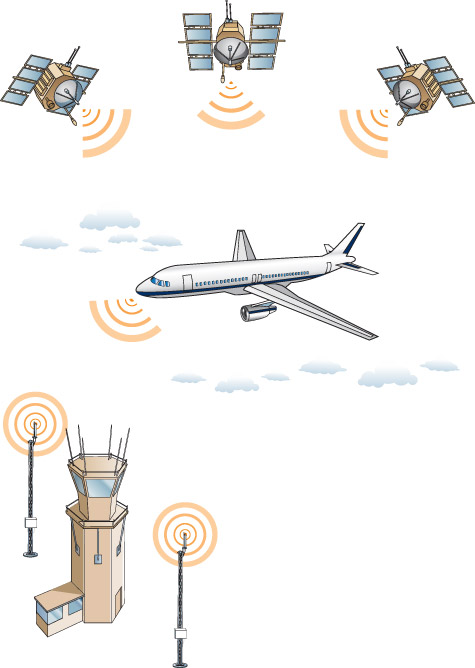| Automatic Dependent Surveillance-Broadcast (ADS-B) will be a key element of future air traffic management systems, such as Europe’s SESAR and the United States’ NextGen program. However, its widespread implementation is not expected until sometime between 2020 and 2025. Unlike the current surveillance technique, where a ground-based radar transmits “interrogating” signals and uses the “replies” from aircraft transponders to determine location, ADS-B equipped aircraft will broadcast their GNSS positions once per second. The information received by air traffic controllers, and other ADS-B aircraft, includes the aircraft’s identification, altitude, speed, velocity, projected path and other useful information. ADS-B data will be received by dedicated ground receivers, which will immediately pass them to the controllers’ screens at the nearest air traffic control center. In turn, the control center will be able to uplink weather and other data to aircraft via the ground station’s transmitter. One of the main reasons that ADS-B will not be fully implemented for many years is the expensive cost of equipping aircraft with all of the essential avionics to both transmit and receive ADS-B information. As such, there will be an extremely slow transition period complicated by the fact that ADS-B and radar use very different technology. Fortunately, there is a technology that is able to decode both traditional radar avionics and ADS-B.
“The essence of multilateration is that it provides an elegant transition to ADS-B by using the same ground infrastructure, while providing early benefits through improved surveillance.” Michael Harrison, Editor, ATCA Journal of Air Traffic Control | | 
With ADS-B, an aircraft’s position is detected by GNSS and broadcast along with other data, such as path, heading, and speed, to ground stations, which decode and transmit the information to ATC automation systems for display on the screens of air traffic controllers. |

